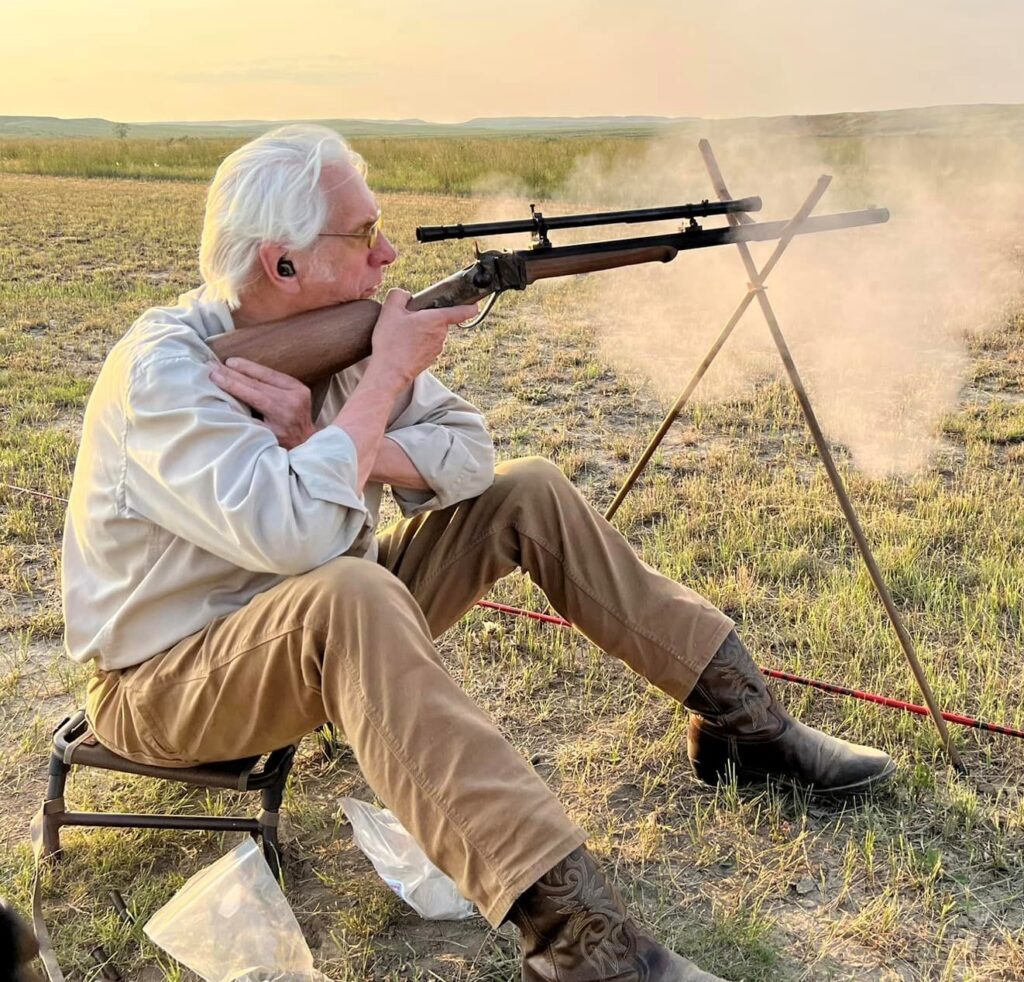
By Mike Nesbitt | Contributing Editor
While on the way to the annual Matthew Quigley Buffalo Rifle Match, held near Forsyth, Montana, my partners, Allen Cunniff and Mike Moran and I stopped at the C. Sharps Arms shop in Big Timber, with where I picked up my new rifle.
That new gun is another Model 1874 and it is chambered for the .45-70 cartridge but other options make it something I’ve never had before. In addition to other differences, this new gun is topped with a 10X scope from Montana Vintage Arms. To say that I was eager to get it is putting things mildly…
The rifle itself is certainly not plain although it has few added options. One option that can be quickly seen in the profile picture of the gun is the pistol grip. That was selected mainly for the advantages a pistol grip can give to the shooter while firing from the offhand position, such as while “shooting chickens” in a silhouette match.

Another option was the #1 ½ Heavy barrel, with its length of 28-inches, giving this rifle a weight, with the scope, of just over 12 ¾ pounds. The barrel was made by Krieger and this is my first rifle with one of their barrels but they do have a very fine reputation. I was sure to have brass escutcheons added where screws enter the wood on the forearm and at the wrist. Other features are simply standard, including the plain wood and the standard color-casehardening on the action and butt plate.
(C. Sharps Arms gets their barrels as rifled round blanks, which are profiled to order for the gun that they’re being fitted on.)
And because this rifle would be scope mounted, the lettering for “Old Reliable” and the C. Sharps Arms address plus “CAL .45” were not stamped on the top flat of the barrel. Instead, those markings are found on the diagonal flat to the left side and the “CAL .45” is right below the rear scope mount. Also, instead of indicating the case length (which is 2 1/10th-inches for the .45-70) I asked them to mark the powder charge (70) upside-down on the right vertical flat of the barrel, as was sometimes done on the late Sporting Rifles made at Bridgeport. Such markings add to the character of my new rifle.
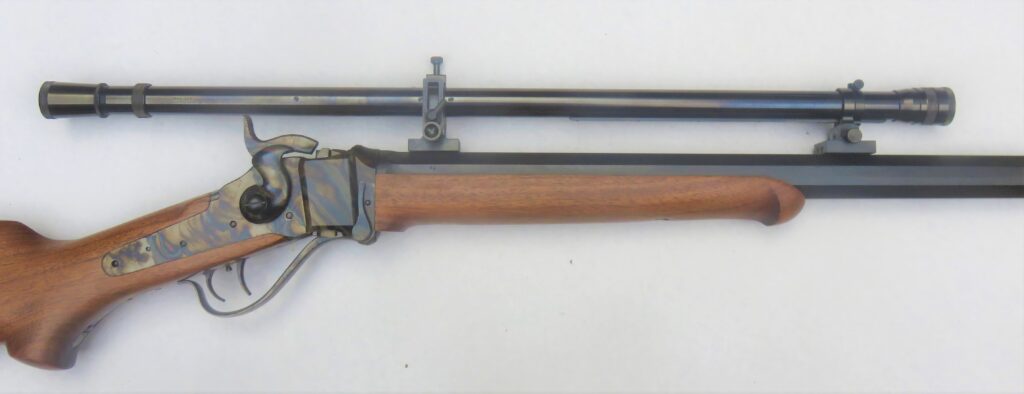
The MVA (Montana Vintage Arms) scope in 10X is a relatively new offering. It is listed as an “A” scope and it is also available in 8X. I voted for the 10X because I need all of the help I can get as my right eye just ain’t what it used to be. The scope is not a cure, certainly, but it is helping. Back to the scope for a moment, this is one of MVA’s shorter scopes, measuring 23 inches in length. While the scope’s eye relief is short, which puts the shooter’s eye close to the scope, this scope slides in recoil and I’ve never had the scope hit my shooting glasses when firing the gun. With this scope, I’m now a scope user… (For more information on MVA scopes, visit their web site at montanavintagearms.com.)
One thing that must be remembered while shooting a rifle with one of these scopes, is to pull it back to “shooting position” before taking the next shot.
The rifle I actually intended to use at Quigley was my heavier Sharps in .45-90 caliber, which has another version of the MVA scopes, a long 6X tube. That rifle is well trained and fairly well experienced by now and I had over 120 rounds of ammo prepared for it with 550 grain bullets. Looking at the score I got at this year’s Quigley, that is what I should have done. But my new .45-70 simply fascinated me too much.
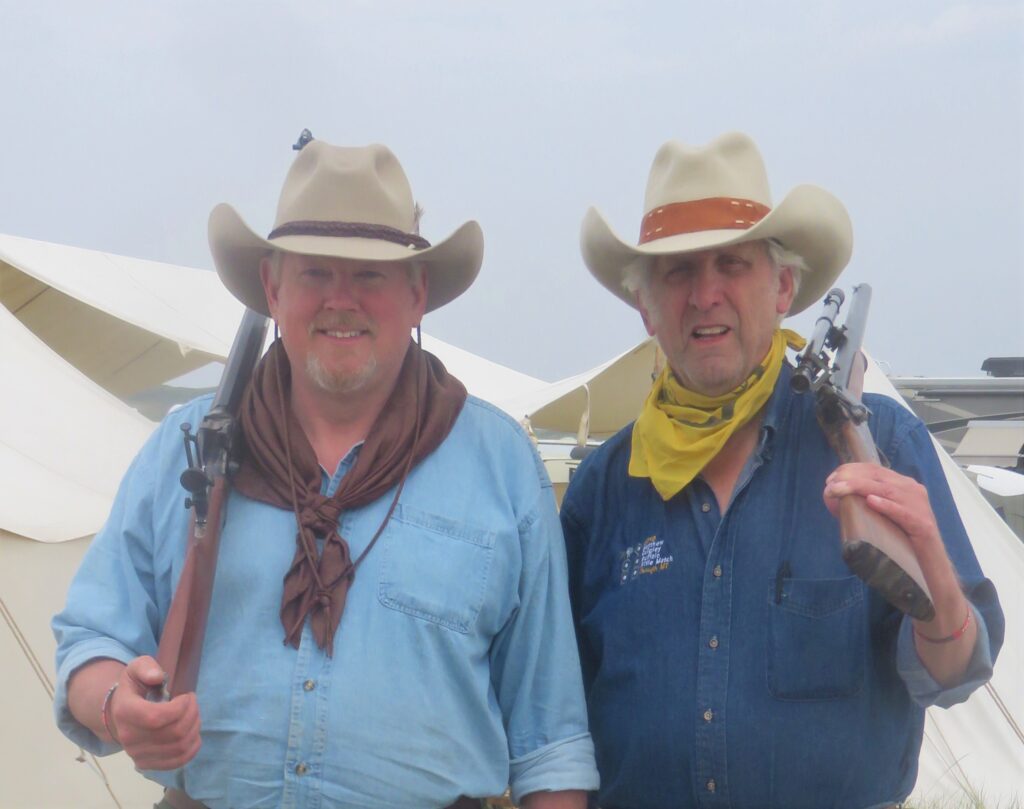
We got to “Quigleyville” later that Monday afternoon and quickly found where we’d put up the tent. There was plenty of room because we were a bit early and we found the spot where our tents had been a year before. We were early enough that hardly any of the vendors or traders had arrived as yet and, with no lines to wait in, we registered and got our duties all taken care of. Then it was time for dinner and I did the cooking, rationing out burgers from the camp stove.
At Quigley, the range stays open for practice until 8 p.m. Registered shooters are free to use the range for sighting in. That is certainly a necessity for us because we don’t have ranges near home where we can practice out to over 800 yards. Doing some shooting was inviting but, being tired from our trip, I didn’t have the real desire to shoot right away. That feeling stayed with me until just about 7:30, with only 30 minutes to go before cease-fire, when I almost suddenly just had to shoot my new rifle.
So, my partners followed me to the firing line and I decided to shoot at the diamond, the closest target which is shot at from the sitting position, only 400 yards away. For a “guessed at” sight setting, I “borrowed” the 400-yard setting from my scoped .45-90, rested the rifle’s barrel over the cross-sticks, and sent a bullet on its way. That shot hit several yards high, way up the hill! Okay, that was just what I was there to find out and the scope’s elevation setting was brought back down.
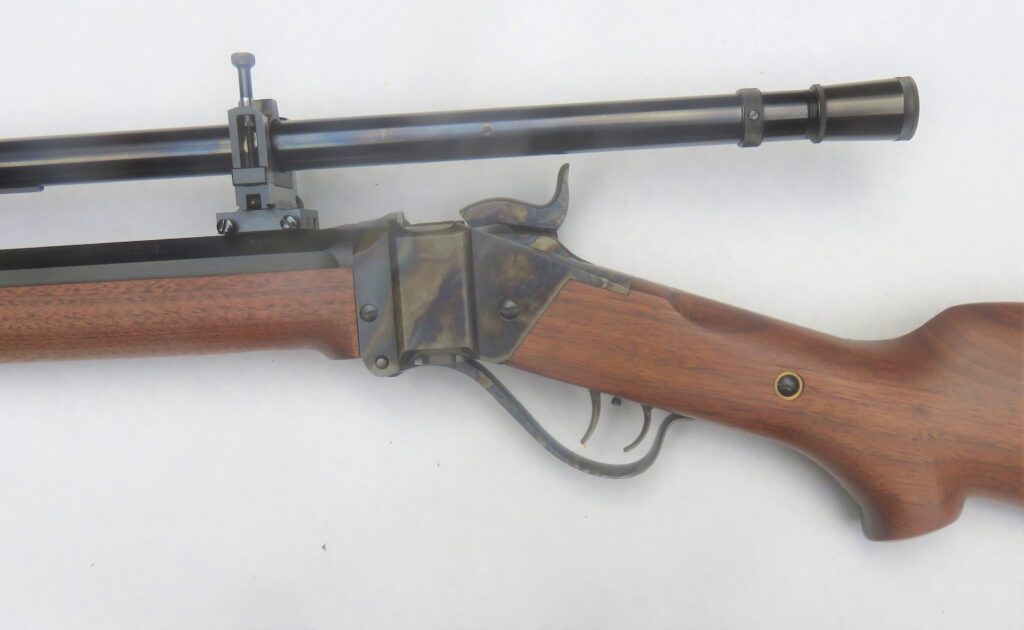
For my first ten rounds, the bore was wiped after each shot which helps to break in the barrel. My second shot was also high, then the bore was wiped again. I believe the target was hit with the third shot and it was generally hit with each successive shot until my ten shots for breaking-in the new barrel were completed. And it was just after taking that tenth shot that the cease-fire horn was sounded. My initial shooting was done and the rifle delighted me.
This new rifle would not pose any problem for me but my ammunition would. The cartridges I had just fired at the diamond were, in fact, a mixture of loads, mostly with a 413-grain bullet cast from Accurate Molds’ #46-413N. But the ammunition I had for sighting-in used Lyman’s #457124, listed as a 385-grain bullet, over 70 grains of Swiss 1 ½ Fg powder, and loaded in un-fired cases. For long range shooting with cast bullets and black powder, un-fired cases are not the best because fire-formed cases will have a more consistent “hold” on the bullets, allowing for a more consistent release of the bullet when it leaves the case. Then, to compound disadvantages even more, the ammunition that I had to compete with for the .45-70 used bullets from the Accurate mold, also over 70 grains of Swiss 1 ½ Fg powder which were also loaded in un-fired cases. Like I said, no actual preparations had been made for using the new .45-70 in the match.
Even so, after shooting those first ten shots, I knew I’d shoot the Quigley Match with this new rifle. If I didn’t score well, I’d just have to roll with the punches and hope for better with my next shot.
For the next two days I teamed with Mike Moran as we continued to practice and get sight settings for all of the targets. In addition to that, we bought new “Quigley” shirts plus other goods. We also both bought new hats from the Buffalo Hat Company, custom hats made while you wait. It was during that time that the number of registered shooters rose to over 600, a very well attended match.
And a tip to the brim of my new hat goes to the staff and crew that ran this match. They did a tremendous job of it, getting all shooters through four of the six targets on Saturday and the following two targets on Sunday. Our group started on the diamond, target number four, and finished on target number one, the buffalo at 805 yards, on Saturday. My fears about my inconsistent ammo were realized, I was not doing well. Even so, I was delighted with the new .45-70 rifle and I did get two hits on the bucket, shot offhand.
On Sunday all shooters shot their last two targets, which for us were the octagon at 600 yards and the “postage stamp” at 530 yards. I got good hits on the octagon but none on the postage stamp. However, some of my misses were so close that I believe they would have been hits if I had been shooting a .50…
As a general observation, I’d say that scores this year were not as high as in previous years. The top shooter this year was Dan Boenker with 41 hits out of the possible 48. The Matthew Quigley Buffalo Rifle Match has never been aced. Hat’s off to Dan!
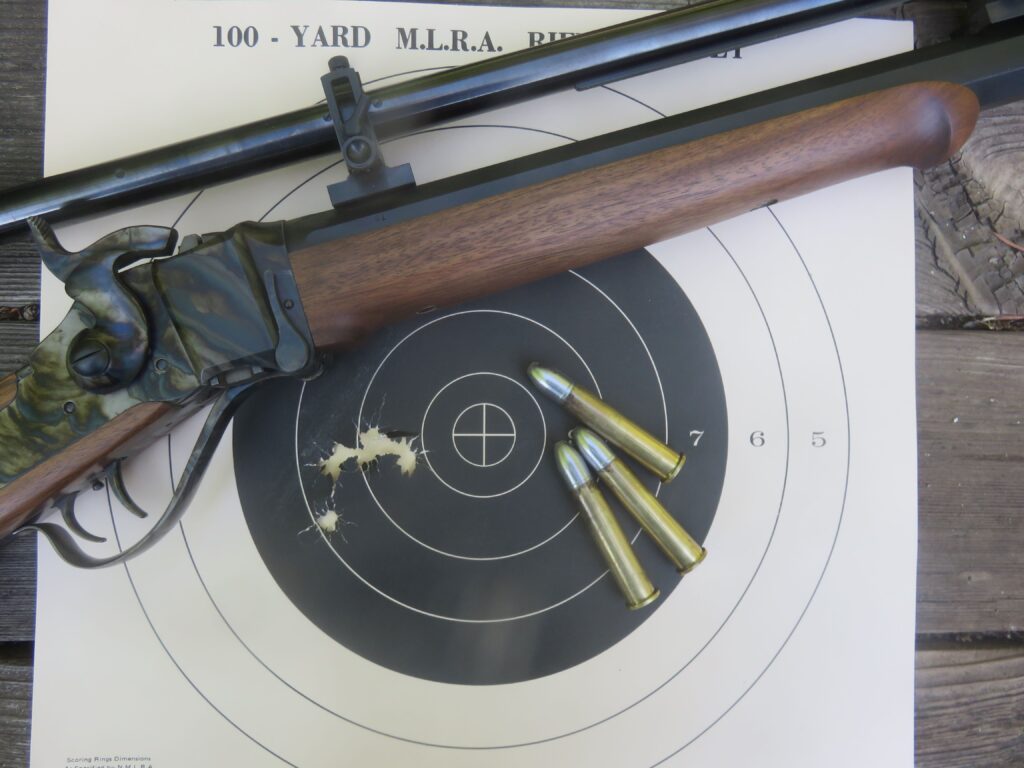
Our long trip home included another stop at C. Sharps Arms, where I picked up a Saeco bullet mold that I’d been looking for. This mold is Saeco’s #645 which is for a .45 caliber 480 grain bullet. After getting home, just to give you a positive after-Quigley report, some bullets were cast using a 25-1 lead-tin alloy and those bullets were sized to .459, lubed with BPC, and loaded in fire-formed cases over 63 grains of Swiss 1 ½ Fg powder. Five of those loads were fired at a 100-yard target from the bench and the group they produced shows that my new rifle does have what it takes, provided some consistent ammunition is fed into it.
This .45-70 is a rifle I expect to be using for a long time, for all sorts of shooting, perhaps even some hunting. That future shooting most certainly includes the Quigley Match next year and my story about that doin’s should be far different from this report. Of course, now I’m mainly talking about my new rifle, which still fascinates me. And for more information about the recent Matthew Quigley Buffalo Rifle Match, as well as future matches, look on their web site at www.quigleymatch.com.
C. Sharps Arms
P.O. Box 885
Big Timber, MT 59011



